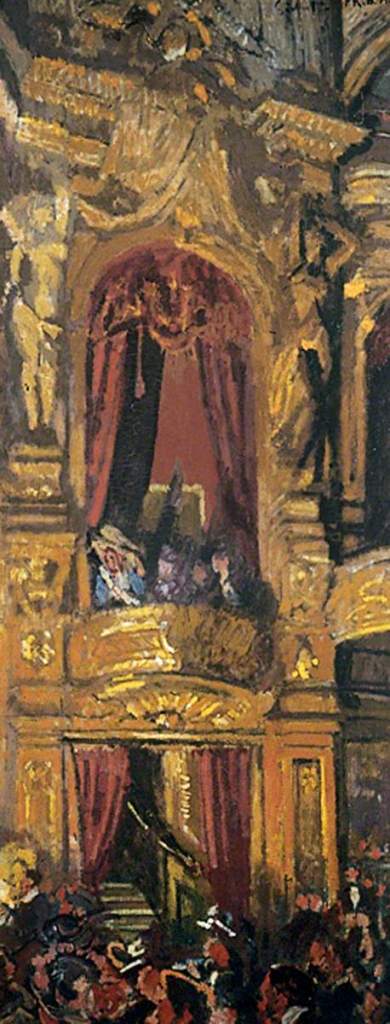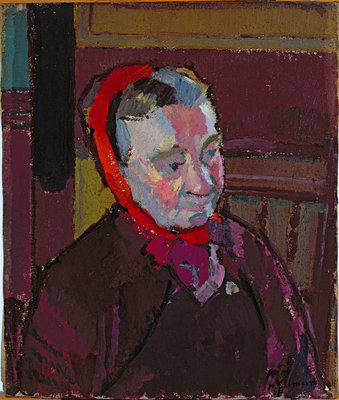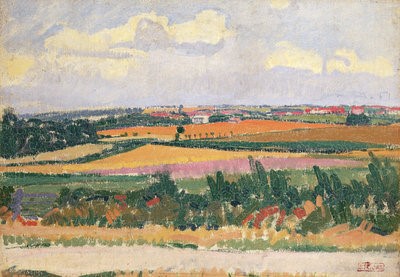The Camden Town Group: Art for the Edwardian Era
The Lightbox, Woking
Until 22nd January 2017
Art is always a good indicator of what is going on historically at any given time or place, whether a product of it or a reaction against it. When Queen Victoria’s rule in England ended in Britain, the dawning of the Edwardian era brought about a feeling of self-awareness and self-expression in art. It reflected an openness, looking towards the continent rather than the generally stiff, introvert art of the late 1800s. In London, specifically the Camden area, there was a unique cluster of painters whose work showed a sense of freedom from the sober strictness that had come before, allowing them to depict real life and divulge real meaning. In contrast to this, the years building up to World War I brought about a wave of fear and anxiety, cutting short the period of optimism. In 1910 Roger Fry curated the exhibition Manet and the Post-Impressionists in London, coining the term which was to become important to a group of painters who formed a group in 1911. The Camden Town Group was spearheaded by Walter Richard Sickert, the senior founder member of the group, and whose studio was often used as a base for meetings, Harold Gilman and Spencer Frederic Gore. During their brief but creatively explosive three years together they set a precedent for modern British art to follow.
Sickert was trained by James McNeill Whistler, an American who came to London, found everything (especially the art) ghastly, and set out to do something radically new. He disliked the themes of myth and literature, feeling that they did not have a place in the modern world, that art was about the present. Sickert absorbed some of Whistler’s rebellious attitude, but developed a style that was very much his own and quintessentially English. The New Bedford (1916-17) shows remnants of Victorian bourgeois activity of theatre or music hall-going, his brash colour palette emphasises tension and also a sense of gaudiness that is hard to look away from. The long format of the canvas (it is nearly 2m tall) forces us to look up at the gilt decoration of the hall. The enormous caryatids are imposing. We are clearly put in the stalls, and the rich in their boxes loom above us, faceless and ambiguous.
Harold Gilman, who met Sickert in 1907, painted with a style inspired by French Impressionism, seen clearly here in his portrait of Mrs Mounter (1916-17). Gilman uses a more expressive than realistic colour palette. The paint is thickly impastoed and depicts a subject unsympathetically. I get a feeling of the mundane. Perhaps the painter saw this lady every day, someone he conversed with out of necessity rather than friendship. Despite this, and despite her lack of social status (thinking that portraits are normally the result of wealth, title, beauty or relationship) Gilman sees her as worth painting a portrait of, and he returns to her again and again. In the same way that the French Impressionists were chronicling modern life in Paris, so the Camden Town Group did for the middle and lower classes in London, representing the banality of urban life.
Often the group depicted life outside the city, much as their French counterparts did. Spencer Frederic Gore‘s In Berkshire (c.1912) is reminiscent of Monet or even Van Gogh. With strong, short directional brushstrokes and a controlled palette, there is a mix of naturalism and expressionism – something that was being played with at the time by many painters. I don’t feel that I gain any real information from this painting about Berkshire, but I think this is irrelevant. It is emotion that is being conveyed here, a fondness I think, and nature evoking a place and time or representing a metaphor. The land is a patchwork of pastel pink and golden yellow. Along with Gilman, Gore is one of the more experimental of the Camden Town Group, absorbing the spirit of French Impressionist and Post-Impressionist artists, drawing inspiration from Cézanne, Gauguin, and even the Fauvists.
This exhibition is a broad yet intensive survey of what the group achieved in their brief time together, and the challenges they took on in the name of a new art. The collaboration resulted in a time of creativity and mutual encouragement, particularly between Sickert and Gore. Each of the artists represented here are very much individuals, finding their own personal ways to reflect what they were experiencing at the time, and so visually the works selected – despite being grouped by theme – are rather different. Kenneth Clarke said of Roger Fry that ‘in so far as taste can be changed by one man, it was changed by Roger Fry’, but it is the painters who created ideas that changed the course of art history, not the critics.



